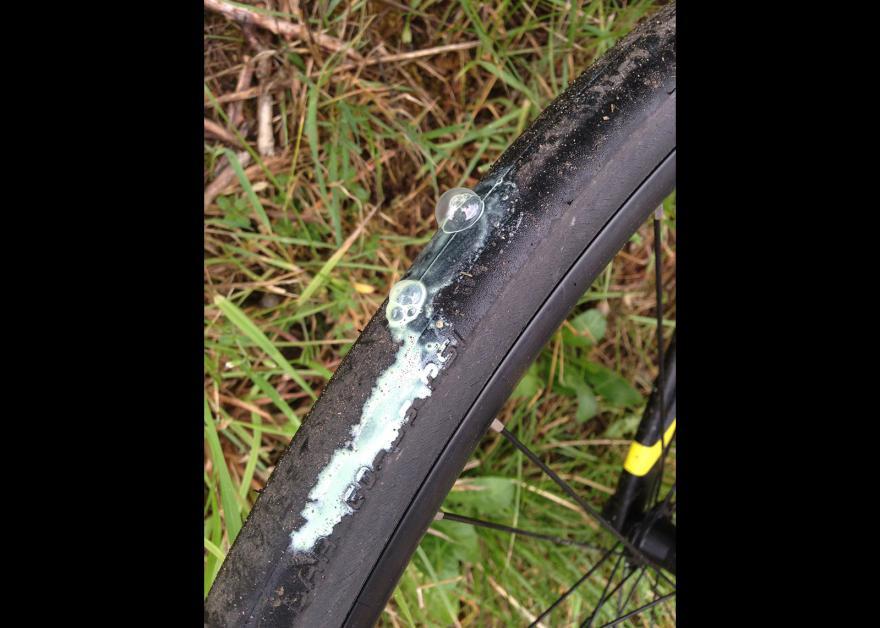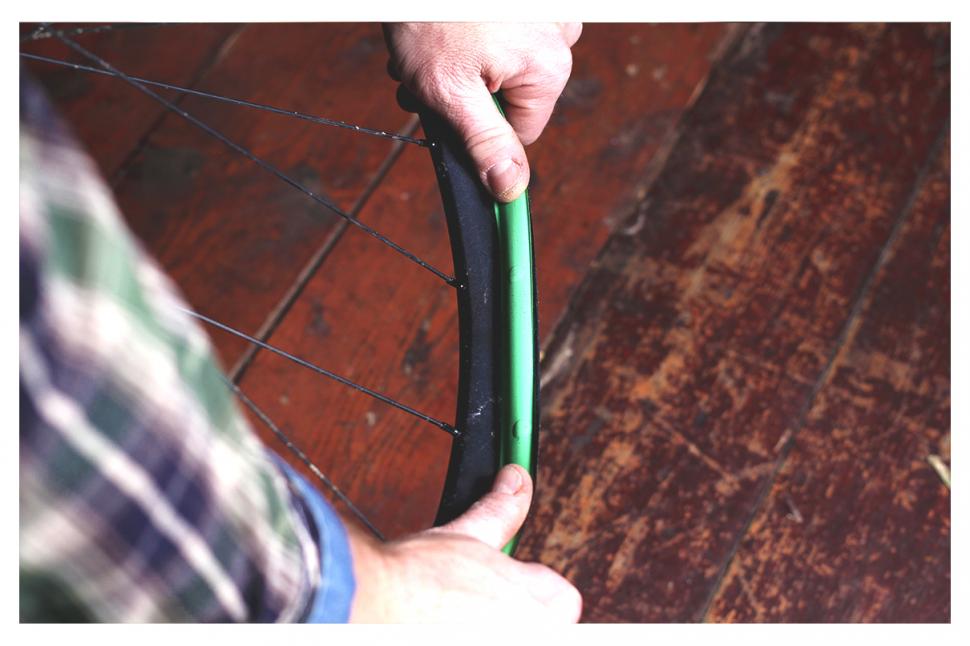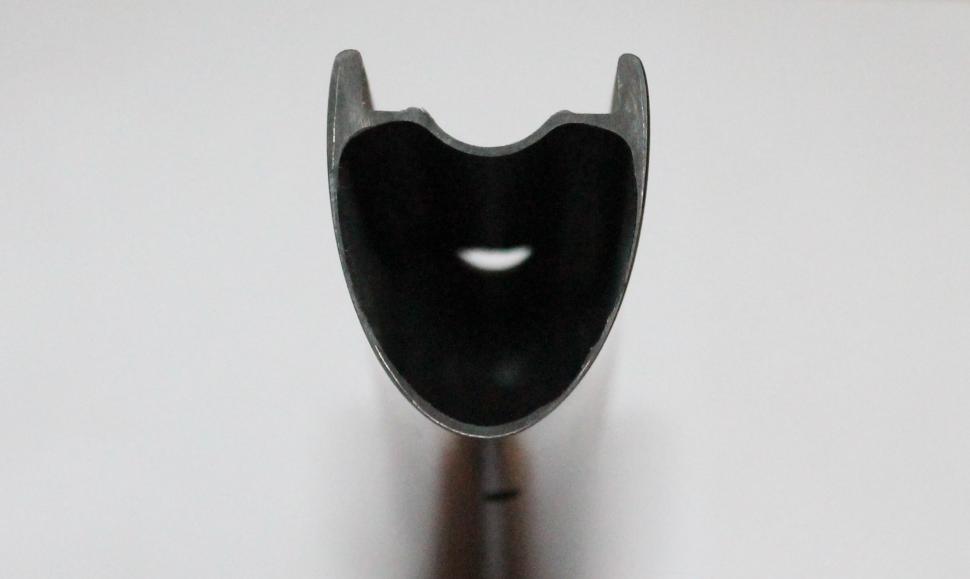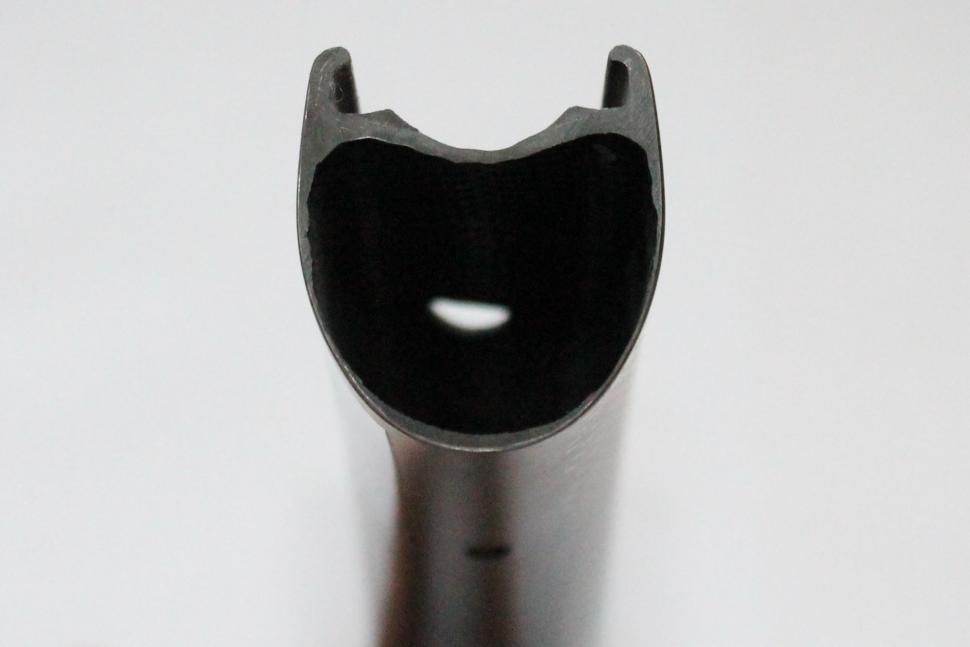- News
- Reviews
- Bikes
- Components
- Bar tape & grips
- Bottom brackets
- Brake & gear cables
- Brake & STI levers
- Brake pads & spares
- Brakes
- Cassettes & freewheels
- Chains
- Chainsets & chainrings
- Derailleurs - front
- Derailleurs - rear
- Forks
- Gear levers & shifters
- Groupsets
- Handlebars & extensions
- Headsets
- Hubs
- Inner tubes
- Pedals
- Quick releases & skewers
- Saddles
- Seatposts
- Stems
- Wheels
- Tyres
- Tubeless valves
- Accessories
- Accessories - misc
- Computer mounts
- Bags
- Bar ends
- Bike bags & cases
- Bottle cages
- Bottles
- Cameras
- Car racks
- Child seats
- Computers
- Glasses
- GPS units
- Helmets
- Lights - front
- Lights - rear
- Lights - sets
- Locks
- Mirrors
- Mudguards
- Racks
- Pumps & CO2 inflators
- Puncture kits
- Reflectives
- Smart watches
- Stands and racks
- Trailers
- Clothing
- Health, fitness and nutrition
- Tools and workshop
- Miscellaneous
- Buyers Guides
- Features
- Forum
- Recommends
- Podcast
9 things they don’t tell you about tubeless tyres
You’ve probably heard lots of good things said about tubeless tyres – better puncture protection, comfort, rolling resistance and so on – but have you heard about the downsides? The tyres can be a pain to fit, sealant makes a mess everywhere and there are huge compatibility issues, as we explain below.
- Buyer's guide to tubeless tyres — all your options in new technology rubber
Tubeless might just be the best thing since the invention of the pneumatic tyre, or it might be a complete waste of time. The history of bicycle product development is littered with as many rubbish products as significant ones, but in our view tubeless tyres are a big step forward (you may beg to differ). Even so, as the technology stands today tubeless has its drawbacks – some of them are pretty well known, others less so.
Here are some of the cons of current tubeless tyre technology.
No more punctures...
Before we get into the downsides, let’s start with a positive. One of the key benefits of a tubeless tyre setup is a greatly reduced risk of puncturing. The liquid sealant inside is able to seal smaller holes caused by glass, flint or stones and plug the hole because it dries very quickly.
When you witness it happening firsthand and are able to continue riding without needing to replace the inner tube you'll be convinced that this is the future.
...but doesn’t plug all holes
That said, tubeless isn’t invincible and the sealant won’t seal all holes above a certain size, generally about 6mm, because it’s simply overwhelmed by the speed of the air rushing out. This means you might, in rare cases, find yourself with a flat tyre and sealant everywhere. Messy!
For really big holes that the sealant can’t fix, you have two choices, either whack a tube in or use a tubeless repair kit involving an odd rubber anchovy – yep, that's what they're called – which you stuff into the hole to seal the tyre. They’re popular with mountain bikers but yet to be embraced by roadies. You can read a review here. So that's something else you need to buy. The price is creeping up.
You still need to carry a spare tube
Yup, it’s advisable to carry a spare inner tube even though you’ve banished them from your wheels, just in the rare event that the sealant can’t plug a hole.
Installation issues - the tyre just won't fit
This is the biggest problem with current tubeless tyres. Fitting a regular (non-tubless) clincher tyre and inner tube is mostly painless. At worst you might need a few tyre levers, but after that, a small pump will get the tyre inflated onto the rim. It takes about five minutes.
Some tubeless tyres, however, can take much more time to get fitted to the rims and involve much cursing. The problem is due to there being no one standard that all rim and tyre manufacturers adhere to. Also, because you need a very good seal with the tyre bead on the rim, it generally involves a very tight fit... in some cases so tight that you need multiple tyre levers. We've known people to give up, it can be that difficult.
When you've got the tyre onto the rim, it's not all over. Nope, in some cases, you need a tubeless-specific pump, CO2 canister or compressor to deliver the big burst of air needed to pop the tyre up onto the beads.
Much of the problem with tricky tubeless installation comes down to the issue of compatibility between different brand rim and tyres, and a lack of a universal standard. There is wide variation in rim and tyre size and bead stiffness, which affects installation and safety. Keeping the tolerances small is crucial to the success of the system because without an inner tube pushing the bead against the inside of the rim there needs to be a really good fit to ensure the tyre doesn’t come off the rim.
- One step closer to a road tubeless standard? And why this matters to you
The result is that some tyres are a breeze to fit to some rims, with the complete opposite true of a different tyre and rim combination.
This is slowly changing, though, with more brands making their tubeless tyres to ETRTO standards and we have to say that similar issues can affect tubed clinchers. That said, the issue seems to be magnified with tubeless.
There’s a difference between tubeless-ready and tubeless rims
You do need to be a little careful if you’re upgrading to a new wheelset when going tubeless as there is a difference between a tubeless-ready rim and one that is designed for tubeless-only tyres.
The difference can be found at the rim bed and specifically, where the tyre bead sits. Hookless rims (above) are designed for tubeless tyres (although you can still use them with an inner tube up to certain pressures; different brands offer different advice on this), and as the name suggests, they do not feature a hook on the rim.
Tubeless-ready rims, meanwhile, offer you a wider selection of tyres as you can use standard clincher tyres and tubeless-ready tyres. A tubeless-ready rim (above) keeps the hooks that you’d expect to find and they don’t come with the lower max tyre pressures of hookless rims either.
Which one is better? That’s not a debate that we’ll get into today.
It can be messy
All that sealant invites the risk of a mess, and sometimes tubeless can be a messy thing. If you get a puncture while riding, unless you have mudguards you could spray sealant all over your frame, bum and back and anyone riding behind you. I’ve seen this happen and while it’s funny, it’s not nice at all.
When a tubeless installation goes wrong, you can be left with puddles of sealant on the floor or ground of your workshop/kitchen/office. Try explaining why there’s white gunk everywhere to your other half!
Tubeless can be heavier
The extra material needed to make a tubeless tyre, and in some cases, the rim as well with additional rim strips, plus the tubeless valves and necessary sealant, means that even though you’re ditching the inner tube, a tubeless setup can be heavier.
The tyres are generally heavier too. A Continental GP 5000 TL 28mm tyre weighs 340g versus 250g for a regular GP 5000 tyre. Removing the inner tube, however, does save you in the region of 100g but you're adding back 50-60g of sealant which negates some of the weight saved, and those tubeless valves are probably a little heavier too, and there's the rim strip if your wheels need it.
Just don't go expecting tubeless to shed loads of weight from your bike with tubeless, although in some cases it can save a small amount. Plus, if you're carrying two spare tubes just in case, that's your weight saved added back to the bike.
- Buyer's guide to tubeless tyres — all your options in new technology rubber
It can be an expensive upgrade
Wheel manufacturers have been quick to embrace tubeless and a lot of new road and gravel bikes are now being sold with wheels that are tubeless-ready, so you’re halfway there.
If you want to go tubeless, you’re going to have to buy new tyres. Now, unless you need to replace worn-out tyres, then it does mean removing a perfectly good set of tyres and replacing them with new tubeless tyres.
Tubeless tyres are a little bit more expensive than the clincher model and you’ll also need to get yourself tubeless valves, sealant and rim strips if the rim bed isn’t sealed.
If your bike doesn’t currently have tubeless-ready wheels then you’re going to need to buy a new set of hoops too.
One alternative to buying new wheels if yours aren't tubeless-ready (and we're not recommending this) is to go ghetto. In the early days of tubeless, especially in the mountain biking world, it was common to use regular non-tubeless tyres and rims and use rim strips and sealant to achieve a tubeless setup. With the higher pressures involved in a road bike tyre it's probably safer to follow manufacturer guidelines and only use approved tubeless components.
Sealant eventually dries out and needs topping up/replacing
Sealant is the magic ingredient that gives tubeless setups their big advantages over inner tubes, in being able to seal punctures.
The liquid sealant required of a tubeless setup doesn’t stay liquid forever. It’ll eventually dry out. I’ve had many alarming cases with road and mountain bikes when I’ve whipped the tyre off only to find the sealant completely dried out!
Muc-Off claims its sealant lasts up to six months after which you’re going to need to top it up. In most cases, the sealant is going to dry out long before your tyre wears out. Now you can either carry out checks every few months by popping the tyre off the rim, or the easiest option is to just top up the sealant every few months.
It isn’t easy to add sealant
When you do need to add sealant, there isn’t really a foolproof way to do it.
Yes, you can remove the core of most tubeless valves, but over time they love to get themselves gunked up with old sealant – and that can make removing the core a nightmare. Then, once you manage to get it out, most sealant bottles don’t fit the valve properly so you’ll inevitably get some sealant dripping down onto the rim, tyre sidewall and – in the worst cases – down onto the carpet. Our Liam is terrible for this.
Now there are specific syringes available for this job but even those are prone to throwing sealant everywhere. This all means that you probably want to have a rag ready.
Sounds like tubeless is a terrible idea then?
If all that has put you off the idea of trying tubeless, we should end by saying that in our opinion the pros of tubeless tyres outweigh the cons. Getting the tyres on and off can be messy and a general pain but the beauty of tubeless is that it's not something you have to do often. There is hope for tubeless to become much more accessible and easier with the industry finally agreeing on new standard guidelines to maybe all these troubles will be a thing of the past and nothing more than teething problems.
Do you love or hate tubeless? Let's hear your thoughts in the comments section.
David worked on the road.cc tech team from 2012-2020. Previously he was editor of Bikemagic.com and before that staff writer at RCUK. He's a seasoned cyclist of all disciplines, from road to mountain biking, touring to cyclo-cross, he only wishes he had time to ride them all. He's mildly competitive, though he'll never admit it, and is a frequent road racer but is too lazy to do really well. He currently resides in the Cotswolds, and you can now find him over on his own YouTube channel David Arthur - Just Ride Bikes.
Latest Comments
- HarrogateSpa 20 min 5 sec ago
Report to the police. Social media posts are easy but usually achieve little.
- cmedred 29 min 43 sec ago
Self-driving cars are far from perfect now and might never be perfect, but there would seem to come a point where there should be a public...
- Rendel Harris 1 hour 11 min ago
mdavidfrodo?
- BikingBud 2 hours 32 min ago
How can anybody reject the beauty of that? It's a wonderful mix of modern tech yet absolutely functional.
- amawby 3 hours 40 min ago
Not unless theVED is made eye wateringly expensive....
- andystow 4 hours 8 min ago
Hyponatremia is a real risk even for an amateur cyclist or runner in hot weather. I've bonked from it before, and I was drinking Gatorade the whole...
- wtjs 4 hours 50 min ago
in the UK we have policing which to a greater or lesser extent relies on assistance from members of the public......
- Cadcam 5 hours 54 min ago
Just wanted to share a quick thank you to everyone who helped out in this thread....
- SecretSam 6 hours 8 min ago
So...don't cycle on it. Lots of other routes around that area. Source: I used to work there.









Add new comment
126 comments
Please do your homework first. Road tubeless tyres hardly come in 23mm, rather in 25mm and 28mm - or even wider. Mavic Pro UST 25mm have a max pressure of 87psi and a recommended pressure of 75psi. I'm 77kg and run mine between 75psi and 80psi, which is more than enough. The 28mm version of the said tyre runs at even lower pressures.
I'm 98kg and 87psi doesn't cut the mustard, what about larger riders, I was 107kg at one point, if you think these max wheel pressures are going to suffice for us bigger types then you're sadly mistaken. The new Open Pro is a fucking piss take to offer such a low max pressure, especially since it's thinner at the braking surface than the last lot so it could keep the weight down (along with the scalloping)
Call me old fashioned but I'm less than enthusiastic about a tiny plug of dried sealant keeping my front tyre inflated as I rattle down a long incline at 60-70 kph, dodging the traffic.
Understandable but how is a vulnerable rubber tube any more secure? It can deflate fast; the sealant will prevent that.
If tubeless existed first, tubes would never be marketed or sold. Not a chance.
you can call me old fashioned too. Seems like a lot of Messing about to me. The cost is just getting ridiculous, It appears they just want to extract the cash from you no matter what. Same with the new Continental GP 5000 tyres. They're a tenner more, GP 4000s II are dear enough. Disc brakes are another money spinner for them. The way they are going it'll be as expensive as running a car. They are tanning the cyclists arse.
Some fair points made here but you can keep your tubes!
Spending many minutes in the rain at the side of the road fixing a flawed/tubed system? No way, Pedro.
Never been let down by tubeless; don't carry a tube anymore; I get punctures but not flats!
Pages